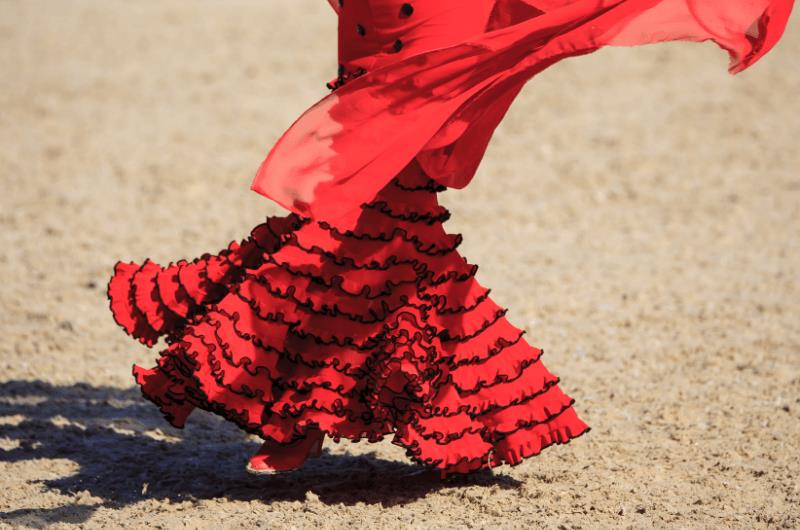Andalusian flamenco—an integral part of Spain. What makes this music and dance culture unique, what is its history, and which places in Andalusia are best for experiencing flamenco firsthand?
What is Flamenco, and Where Does It Come From?
Flamenco is a music and dance culture originating from Spain—specifically Andalusia. It was brought to this region in the 15th century by Romani tribes who arrived from India via Pakistan and Egypt. As a result, flamenco blends Romani culture with Spanish, Jewish, Indian, and Arab influences.
The first written references to flamenco date back to the 18th century. It became more widespread a century later, when it transitioned from the originally closed Romani society to the public sphere. It was also at this time that the dance began to be accompanied by guitar, in addition to singing.
How is Flamenco Danced?
Andalusian flamenco encompasses singing (cante), dance (baile), guitar playing (toque), and rhythmic accompaniment—clapping, finger snapping, or castanets. For Spaniards, it is an integral part of their culture and traditions, as well as a way of life.
Flamenco is traditionally performed in red dresses with ruffles (though you will see women in various other colors at different performances). Dancers also wear shawls with fringes and other accessories, such as flowers in their hair or a fan. The essence of the dance is constant improvisation, which simultaneously expresses a particular attitude towards life. Flamenco reflects a desire for a fulfilled, spontaneous, and free life, and it contains a wealth of emotions (such as sadness, pain, and joy) that dancers convey through hand and finger movements, turns, and hip sways.
The movements of male flamenco dancers are rhythmically more pronounced compared to their female counterparts. Traditional attire for these male dancers includes trousers, a shirt, a vest, a scarf, a hat, and shoes with a lower heel.
Interesting fact: In flamenco, emotions used to play a crucial role as they served as a form of resistance against the orderly society of the time.
Best Places in Andalusia to Experience Flamenco
If you want to see this dance live, visit cities like Seville, Granada, and Jerez de la Frontera, which are considered the birthplace of this music and dance culture. Festivals and celebrations are held here. For example, in Seville, celebrations begin two weeks after Easter with horse parades, delicious food, and flamenco dancing in the streets.
Other interesting flamenco performances include:
- Performances in Seville: Los Gallos or La Carbonería.
- Performance in Granada: La Cueva de la Rocío.
- Festival in Seville after Easter: Feria de Abril.
- Festival in Seville: Biennale Flamenco (held every 2 years and lasts 2 weeks).
- Festival in Utrera: El Potaje Gitano Festival (last Saturday of June).
- The White Night of Flamenco in Córdoba: La Noche Blanca del Flamenco de Córdoba.
Visiting Andalusia and experiencing flamenco firsthand is a unique experience that allows you to delve deeper into both this culture and the essence of the Spanish soul. Flamenco is more than just a performance—it’s a way of life for the Spaniards. No wonder it is considered a symbol of Spanish culture and is an integral part of the country.

